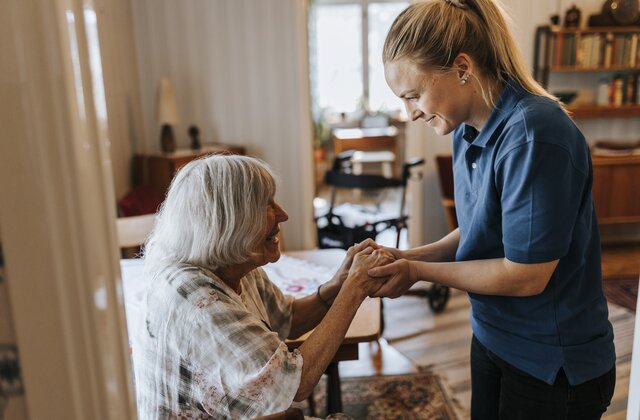As we age, the risk of falling becomes a significant concern, particularly for the elderly who wish to maintain their independence while living at home. This brings us to the importance of medical-grade fall detection systems, which are designed to provide peace of mind for both seniors and their caregivers. These systems are not just about detecting falls but ensuring the safety and well-being of our loved ones.

Understanding Medical-Grade Fall Detection Systems
Medical-grade fall detection systems are advanced technological solutions that help identify when a person has fallen, allowing for immediate response and assistance. Unlike basic systems, these are designed to meet rigorous standards, ensuring accuracy and reliability.
How Do These Systems Work?
These systems typically use a combination of sensors and algorithms to monitor a person’s movements. When a fall is detected, the system automatically alerts designated contacts or emergency services. This immediate reaction can often be the difference between a minor incident and a serious injury.
Key Features of Medical-Grade Systems
- Accuracy: High precision in detecting falls to minimize false alarms.
- Reliability: Consistent performance, even in challenging environments.
- Connectivity: Integration with other smart home devices for comprehensive safety.
Benefits for Family Caregivers
For family caregivers, knowing that their loved ones are safe is paramount. Medical-grade fall detection systems provide a layer of security that allows caregivers to focus on other aspects of care without constant worry.
Peace of Mind
These systems ensure that if a fall occurs, help can be dispatched immediately, reducing the anxiety that caregivers often feel when they cannot be physically present.
Enhancing Independent Living
By using these systems, seniors can enjoy a greater sense of independence, knowing they are protected even when alone. This independence is crucial for maintaining mental and emotional well-being.
Choosing the Right System
When selecting a medical-grade fall detection system, it’s essential to consider the specific needs of the individual and the available features. Some systems might offer additional functionalities, such as heart rate monitoring or integration with other elderly care solutions.
Considerations for Selection
- Ease of Use: The system should be user-friendly for both seniors and caregivers.
- Coverage Area: Ensure the system covers all necessary areas within the home.
- Cost: Consider both initial setup and ongoing maintenance costs.
Technological Advancements
As technology continues to evolve, so do medical-grade fall detection systems. Innovations such as artificial intelligence and machine learning are being integrated to improve detection accuracy and response times.
Future Directions
Future systems are expected to offer even greater precision and may include features like predicting falls before they occur, using data from daily activities.
The Role of IoT
The Internet of Things (IoT) plays a significant role in enhancing these systems, offering seamless integration with other smart devices in the home.
Challenges and Considerations
While these systems offer numerous benefits, there are challenges to consider, such as privacy concerns and the need for regular updates to maintain system accuracy.
Addressing Privacy Concerns
Many users worry about privacy, especially when systems use cameras. However, there are solutions available that prioritize privacy, such as those discussed in fall detection without cameras.
Maintenance and Support
Regular maintenance and support are crucial to ensure the system functions correctly and continues to provide the necessary protection.
Real-Life Impact
Many families have shared stories of how medical-grade fall detection systems have provided timely assistance, preventing serious injury and offering peace of mind.
Case Studies
Case studies highlight how these systems have been lifesaving, often reaching emergency contacts faster than traditional methods.
Feedback from Users
Feedback from users emphasizes the reliability and effectiveness of these systems, with many noting the increased sense of security they provide.
How to Get Started
For those interested in implementing a medical-grade fall detection system, start by researching available options and consulting with experts to find the best fit for your needs.
Installation and Setup
Most systems are straightforward to install, but professional assistance can ensure optimal setup and functionality.
Training and Education
Training for both the user and caregivers can maximize the benefits, ensuring everyone understands how the system works and responds during an emergency.
Conclusion
In conclusion, medical-grade fall detection systems are an invaluable tool for ensuring the safety and independence of our elderly loved ones. As technology continues to advance, these systems will only become more sophisticated, offering enhanced protection and peace of mind for families everywhere.

FAQs
What should I look for in a medical-grade fall detection system?
Look for systems with high accuracy, reliability, and user-friendly features. Consider the coverage area and integration with other smart devices.
Can these systems prevent falls?
While they cannot prevent falls, they can ensure immediate assistance is provided, reducing the risk of severe injury.
Are there privacy-friendly options available?
Yes, there are systems designed to prioritize user privacy, often avoiding the use of cameras. More information can be found in resources like privacy-friendly fall detection solutions.
This article contains affiliate links. We may earn a commission at no extra cost to you.






